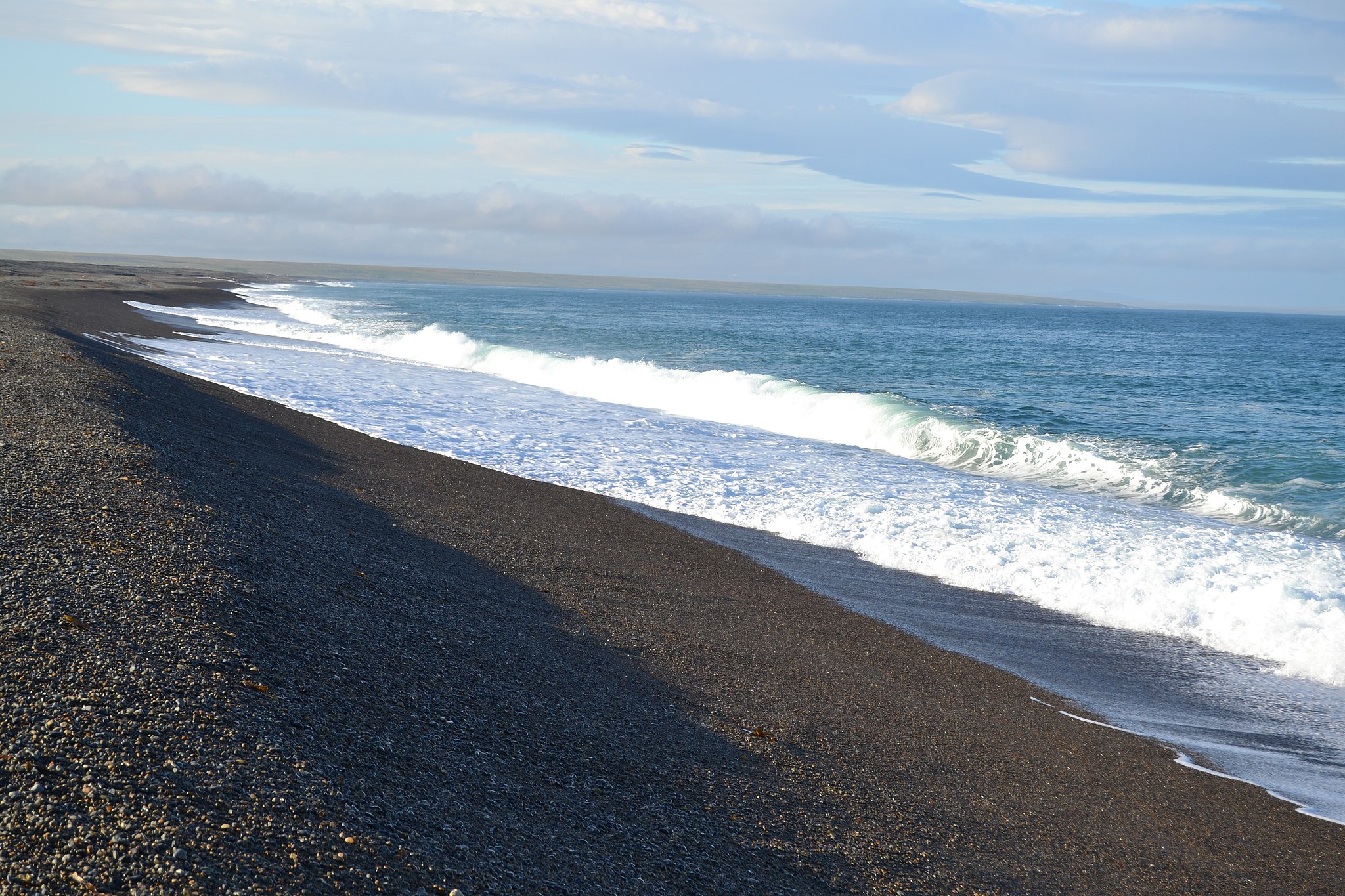Two Russians fled across the Bering Strait to Alaska to escape mobilization
U.S. and Alaska leaders call for plans to prepare for other potential asylum-seekers as men flee compulsory military service in Russia.

Two Russian nationals came ashore on St. Lawrence Island in a small boat on Tuesday, landing on a beach near Gambell, a community of about 500 people on the northwestern coast of the remote Alaska island.
The men were fleeing mobilization for the war in Ukraine, and they sought asylum in the U.S., according to a joint statement from both of Alaska’s U.S. senators.
They “fled one of the coastal communities on the east coast of Russia to avoid compulsory military service,” according to Karina Borger, a spokesperson for Sen. Lisa Murkowski.
On Tuesday morning, a “senior community leader from the Bering Strait region” contacted Sen. Dan Sullivan about the two men, the senator said in the statement on Thursday. Sullivan then contacted other federal agencies, including the U.S. Department of Homeland Security, which houses the U.S. Coast Guard, and U.S. Customs and Border Protection.
“Since those calls, Customs and Border Protection is responding and going through the process to determine the admissibility of these individuals to enter the United States,” he said.
The U.S. Coast Guard arrived with a C-130 on Wednesday to take Customs and Border Protection officials to the remote island in the Bering Sea, about 50 miles from Russia’s Chukchi Peninsula.
“The individuals were transported to Anchorage for inspection, which includes a screening and vetting process, and then subsequently processed in accordance with applicable U.S. immigration laws under the Immigration and Nationality Act,” a DHS spokesperson told ArcticToday.
Alaska Gov. Mike Dunleavy said at a press conference on Wednesday that the incident “may be a one-off.”
“We don’t anticipate a continual stream of individuals or flotilla of individuals — there’s no indication that that’s going to happen,” he said. But he added that the incident was a surprise, and could portend more Russian individuals fleeing through the Bering Strait.
Sullivan said the incident underscores the importance of creating plans for similar incidents in the future.
“This incident makes two things clear: First, the Russian people don’t want to fight Putin’s war of aggression against Ukraine. Second, given Alaska’s proximity to Russia, our state has a vital role to play in securing America’s national security,” he said.
“We are actively engaged with federal officials and residents in Gambell to determine who these individuals are, but right now, we already know that the federal response was lacking,” Murkowski said in the statement.
“Only local officials and state law enforcement had the capability to immediately respond to the asylum seekers, while Customs and Border Protection had to dispatch a Coast Guard aircraft from over 750 miles away to get on scene.”
Such delays highlight the difficulty of operating within the Arctic, she said.
Attempts by ArcticToday to reach officials in Gambell were unsuccessful. But an official from another remote community in the Bering Strait — who asked to remain anonymous so as not to attract other refugees to their community — told ArcticToday that they have not been briefed on federal or state-level plans for Russian asylum-seekers, nor do they have a contact at Customs and Border Patrol if such an incident were to occur.
Despite the communities’ close proximity to Russia, they are frequently under-resourced and “forgotten” on global and domestic matters, the official said.
Hundreds of thousands of Russian men have left the country as Putin orders military service for all men under 65. Russia has reportedly opened military enlistment offices near the border to intercept those seeking to flee across land borders.
At the other end of the Russian Arctic, Norway’s lone land border crossing remains open — and the sole land entrance to Europe’s Schengen area after Finland closed its borders to most travelers from Russia — and has attracted some Russian men fleeing mobilization, though not as many as other nations of the former Soviet Union. Norwegian officials have beefed up security in the region and said they might restrict entry further with little notice.